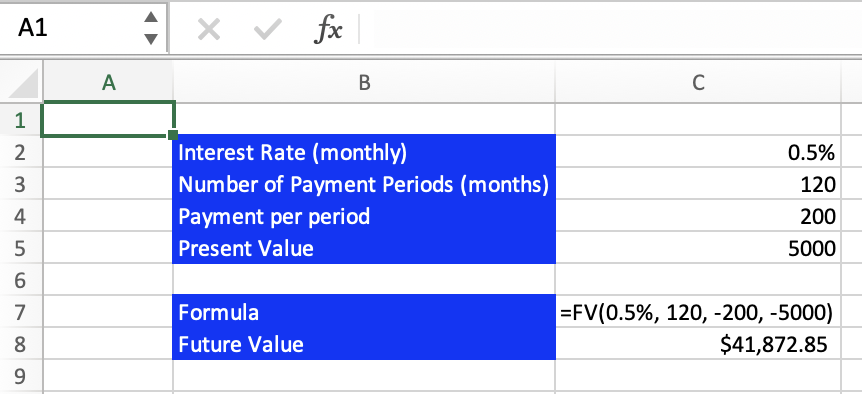How to Use Excel's FV Function (Basic Guide)
In this article, you will learn how to calculate future values using the FV function in Excel.
What is the FV function in Excel?
The FV function in Excel is a financial function that calculates the future value of an investment. This tool can be used to determine the future value of an investment or loan with a constant interest rate, periodic constant payments, and a fixed period.
When is the FV function beneficial in Excel?
The Future Value (FV) function in Excel is highly beneficial in various scenarios, particularly in the field of finance and investment, where understanding the potential value of money over time is crucial. Here are a few instances where the FV function can be especially helpful:
- Loan Repayments: The FV function can also be used to calculate the total amount that will be repaid on a loan over time, including the interest. This can assist in planning and budgeting for loan repayments.
- Savings Goal: If a person has a specific financial goal in mind, like saving for a home, car, or education, the FV function can be used to determine how much they need to save each period (monthly, quarterly, etc.) to reach that goal within a specific timeframe.
- Financial Modeling: In financial modeling, the FV function can help to forecast the future value of a project or investment, which is crucial in decision-making processes.
It's important to remember, though, that while the FV function can provide estimates, it should be used as part of a broader financial strategy, considering all the variables that can affect the final outcome. The FV function is based on constant rates of return and payments, which might not always reflect real-world scenarios where interest rates and payments can fluctuate.
Understanding the syntax of the FV function in Excel
rate: The interest rate per period.
nper: The total number of payment periods in an investment or loan.
pmt: The payment made each period; it cannot change over the life of the investment.
pv (optional): The present value or lump-sum amount for which the future value is to be calculated.
type (optional): This argument determines when the payments are due.
- Input 0 if payments are due at the end of the period (this is the default setting).
- Input 1 if payments are due at the beginning of the period.
Note: Make sure your units for periods are consistent. For instance, if you are doing monthly payments you also want your rate to be monthly. Or both can be annual. Ultimately, the units for nper and rate arguments should match.
Note: Any cash paid out should be input with negative signs such as deposits.
How to use the FV function in Excel
Consider an individual who starts out with $5,000 in their savings and invests $200 per month to the savings account that earns an monthly interest rate of 0.5% (or 0.005). We want to know the future value of this investment after 10 years. The setup and calculation of this example can be seen below.

Note that for consistency and accurate calculations we have converted the nper argument to months by multiplying our payment period of 10 years by 12. Furthermore, both the pmt and pv arguments are input with negative signs, this is because they are deposits. Lastly, the type argument is omitted from the function since we are depositing at the end of the month which is the default argument and so while we can input 0 it is not necessary.
And so, the future value of this investment is then calculated to be $41,872.85.
Go to the page LiveFlow‘s How to Guides to find more information about Excel and Google Sheets formulas and tips that were not covered here.

